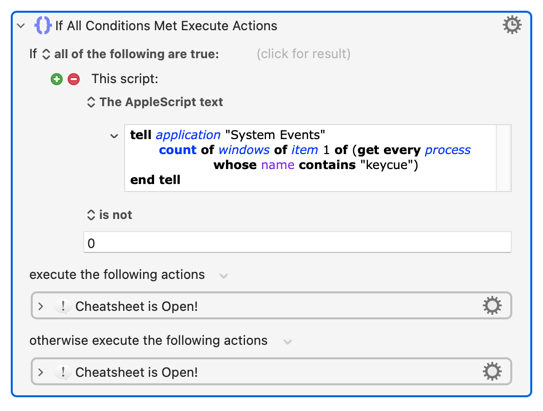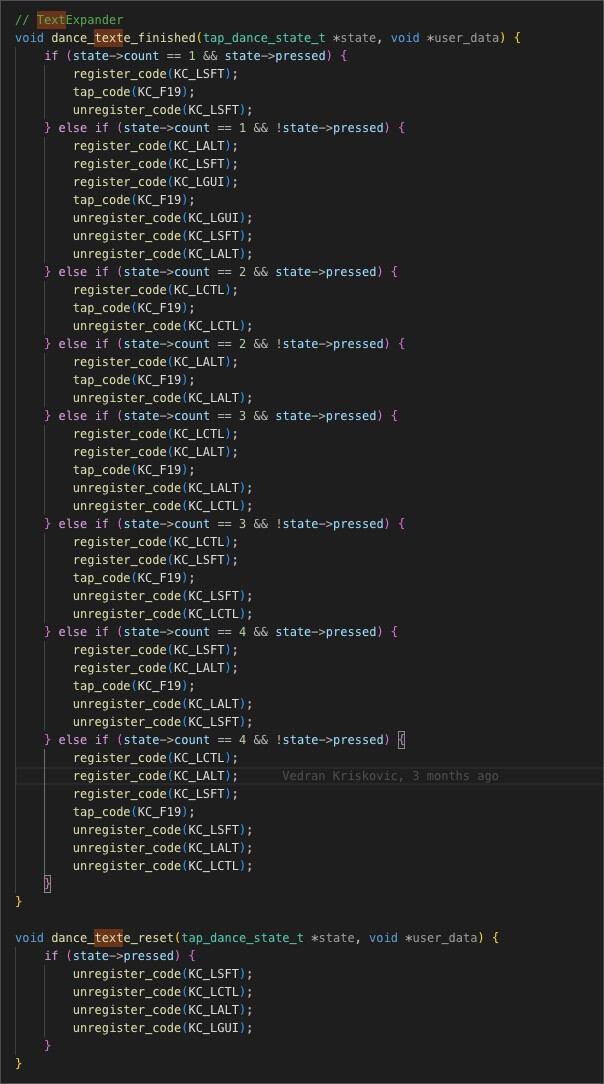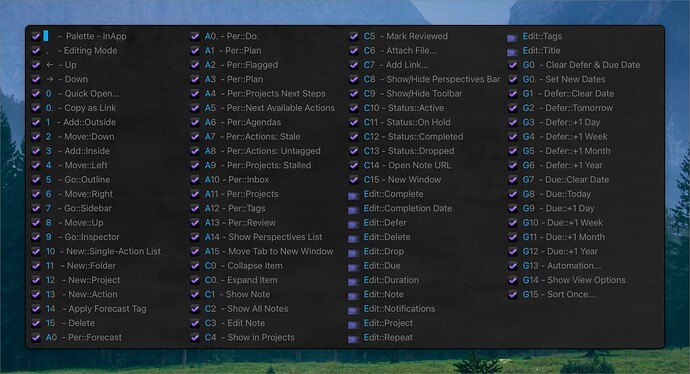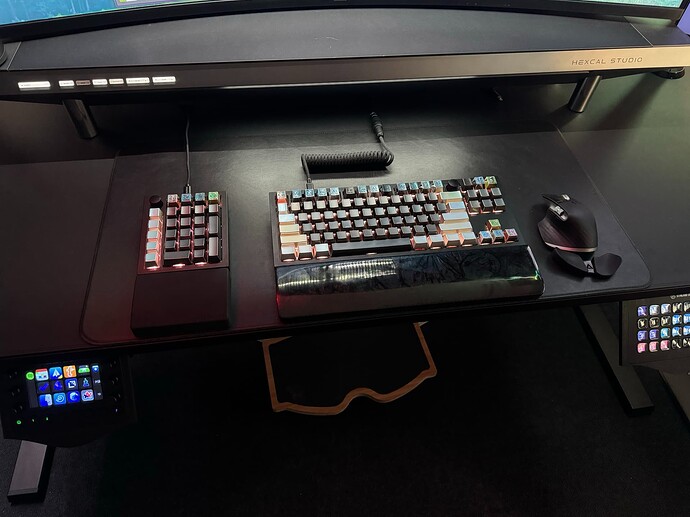“Quadruple tap dances”—would that be a quadrille?
Well, anyway, I’ll get back en pointe… I have never quite been tempted enough by “tap dance” to try it out so your perspective as someone who uses it a lot is certainly of interest to me.
(For those running for the exit: such programming is advanced use of QMK, so don’t think it is all scary like this. The essentials for regular use are easy enough to understand).
Right, so F19 will have been chosen since it’s a keycode that is usually not otherwise needed when using a Mac. When tapped, the key that has been programmed to be the F19 key sends the usual code for F19, and, depending on how many time the key has been tapped, a combination of modifiers is also sent. For example (looking at the code), three taps of the key will output ⌃⌥ F19. The KM macro then handles that as it would any other hotkey trigger.
When you write that it’s a “placeholder” macro group, @Vex, I think you mean that it is used as a sort of template. It‘s a group of macros that can be copied and then edited as needed for each destination application. Is that right?
Initially, I was surprised to read that you use a numpad! It is so easy to assign a layer to your main keyboard for use as a numpad. But I realise that that came from my bias as a user of a split keyboard with an ortholinear layout. Numpads do not, of course, map well to a traditional keyboard layout!
Another surprise was your use of two StreamDecks… and also their placement relative to the main keyboard. Do you not find the main keyboard (and the numpad) enough? Does it not break your typing flow to reach for those StreamDecks? I ask not to imply that you are wrong but because I suspect that you have reasons that may be interesting. Or maybe it is simply that you are a video streamer, and are using them for their intended purpose. 
That is, to the same extent that one can go deep with Keyboard Maestro, perhaps? With both, some initial reading is required but otherwise it is not so difficult to get started, and then one can look into more advanced solutions as needed. I am now perhaps ready to investigate tap dancing! 
It was certainly interesting for me, thank you.
Putting that to one side, though, are you any closer to a solution for your KeyCue question?! 




